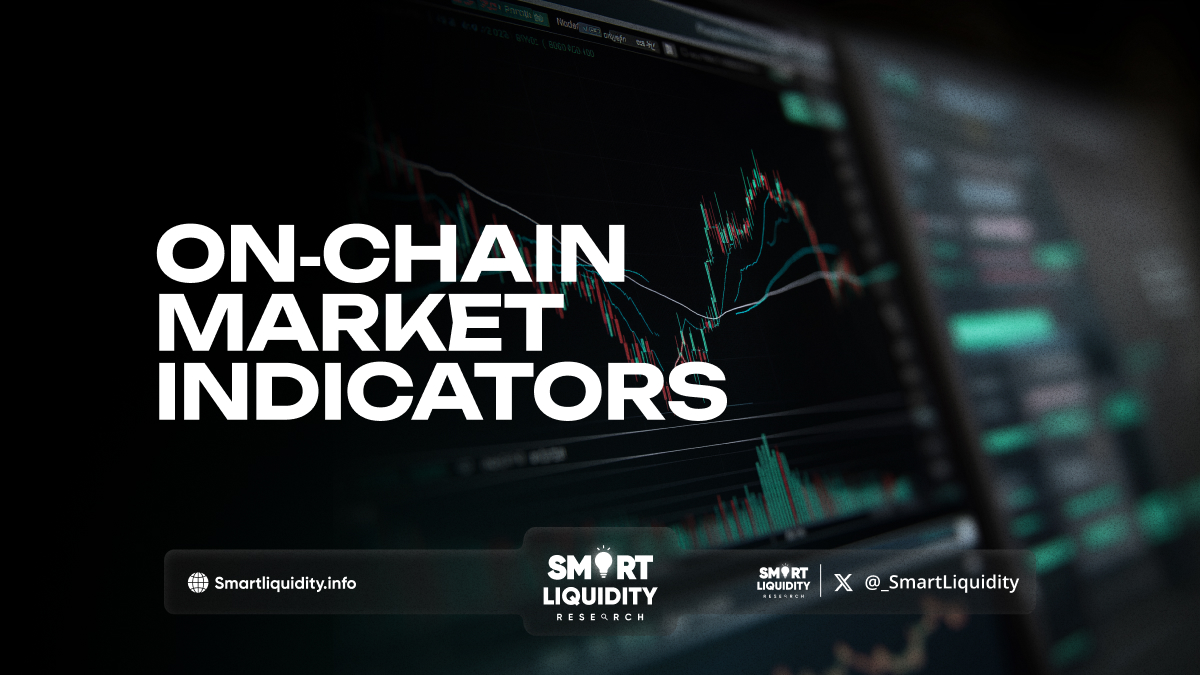On‑Chain Market Indicators


In crypto, success takes more than watching charts. On-chain market indicators offer deep insight using blockchain data, tracking sentiment, usage, and capital flows. With full transparency, every wallet move and transaction is visible, helping traders decode behavior, market trends, and network health.
What Are On‑Chain Indicators?
On-chain indicators are analytical metrics extracted directly from blockchain data. Since blockchains like Bitcoin and Ethereum are decentralized and transparent, all transactional and wallet-related data can be monitored in real time. These metrics provide an unfiltered look into what’s happening under the surface—beyond price charts and candlesticks.
They help answer questions like:
- Are investors accumulating or distributing?
- Is network activity increasing or declining?
- Are coins being moved to exchanges (to sell) or to cold storage (to HODL)?
- Are holders in profit or panic?
Unlike technical analysis (which deals with past price and volume), on-chain analysis taps into the fundamental behavior of market participants. It’s the blockchain equivalent of “following the
Categories of On‑Chain Indicators
To understand on-chain indicators holistically, it’s useful to group them by purpose. Below is a breakdown of the most widely used metrics by category:
Category | Indicator | What It Shows | Used For |
Activity Metrics | Active Addresses, TX Count | Number of unique and total transactions | Network adoption, daily utility |
Supply Dynamics | Exchange Reserves | Crypto held on centralized exchanges | Accumulation vs distribution trends |
Profitability | NUPL (Net Unrealized P/L) | Unrealized market-wide profit or loss | Cycle timing, sentiment analysis |
Valuation | MVRV Ratio | Market cap vs. realized cap | Fair value zones, tops/bottoms |
Holder Behavior | HODL Waves, SOPR | Age and profit of moved coins | Long-term conviction, potential sell-offs |
Miner Activity | Hash Rate, Miner Outflows | Mining power and earnings management | Network security, miner sentiment |
Together, these indicators offer a comprehensive framework for analyzing the crypto market.
Network Activity & User Adoption Metrics
A blockchain’s utility is largely measured by how many people are actively using it. This is where Activity Metrics come into play. These include:
- Active Addresses: The number of unique addresses transacting on a given day. A surge usually signals growing interest and adoption.
- Transaction Count: Measures the number of confirmed transactions in a set period. Sustained high counts suggest healthy usage.
- New Addresses: Reflects user acquisition. A rising trend in new addresses is often seen during bull markets or increased network utility.
For example, during Ethereum’s DeFi boom in 2020, both active addresses and gas fees soared, driven by dApp activity and NFT trading. This uptick preceded a strong price rally, illustrating the predictive power of on-chain adoption metrics.
Exchange Flows: Watching for Accumulation or Distribution
Tokens don’t usually sit idle. They move—especially to and from centralized exchanges, which are key liquidity hubs. Monitoring these flows can provide actionable insights:
- Exchange Inflows: When users transfer large amounts of BTC or ETH to exchanges, it can indicate intent to sell. Spikes here often foreshadow price corrections.
- Exchange Outflows: Suggest that investors are moving assets to personal wallets or cold storage, indicating longer-term holding behavior.
Stablecoin flows, especially of USDT or USDC, are also critical. Rising stablecoin reserves on exchanges suggest increased buying power, while falling reserves may signal decreasing demand.
Notably, in March 2020, shortly after Bitcoin’s COVID crash, a large outflow of BTC from exchanges coincided with the start of an accumulation phase that preceded a year-long bull market.
Valuation Metrics: Beyond Market Cap
To understand if an asset is undervalued or overvalued, on-chain analysts often turn to valuation indicators:
a. Realized Cap
This metric values each unit of a cryptocurrency based on the last time it was moved, instead of current market price. It accounts for actual realized value in the market.
b. MVRV Ratio
Calculated as:
MVRV = Market Cap / Realized Cap
- When MVRV > 3.5, the market is historically overextended and due for correction.
- When MVRV < 1, the asset is often undervalued, with significant upside potential.
c. NUPL (Net Unrealized Profit/Loss)
This indicator shows the average profit or loss of all tokens in circulation. Peaks in NUPL often coincide with market tops, while deeply negative values may indicate capitulation phases and prime accumulation periods.
These tools are often used together to time market cycles—helping investors avoid buying the top or panic-selling the bottom.
Holder Behavior: Understanding Long-Term vs Short-Term Dynamics
Perhaps the most unique insight of on-chain data is the ability to categorize holders:
- Short-Term Holders (STH): Those who’ve held coins for less than 155 days.
- Long-Term Holders (LTH): Those who’ve held for longer.
Metrics like HODL Waves visually represent how long coins have stayed in wallets. More “old” coins typically mean fewer coins are at risk of being sold, which supports price stability or upward movement.
Another key metric is:
SOPR (Spent Output Profit Ratio)
SOPR = Selling Price / Cost Basis
- When SOPR > 1, holders are selling at profit.
- A drop below 1 indicates realized losses and potential market bottoming.
Tracking LTH accumulation during bear markets is one of the strongest predictive signs of an impending bull cycle.
Conclusion: The Future of Smart Investing is On-Chain
On-chain indicators offer a revolutionary shift in how we understand and navigate crypto markets. They provide verifiable, real-time, transparent insights into what people are doing with their assets—not just how much something is worth today.
Still, on-chain analysis should not be viewed in isolation. It is most effective when used in conjunction with technical indicators, macroeconomic trends, and narrative analysis. Furthermore, as new blockchains and Layer-2 solutions emerge, the definition and importance of certain metrics may evolve.
Yet, the core value remains: on-chain indicators democratize access to meaningful market intelligence, giving every participant—from retail investor to hedge fund—an equal playing field.
Tools for On‑Chain Market Analysis
Here are some of the top platforms to explore on-chain data:
- Glassnode – Comprehensive metrics for BTC, ETH, and other networks.
- CryptoQuant – Real-time charts and alerts, especially around exchange flows.
- Nansen – Wallet labeling and smart money tracking.
- Dune Analytics – Community-driven dashboards and custom SQL queries.
- IntoTheBlock – Visual insights powered by AI and blockchain analytics.
Mastering these tools and the metrics they provide can significantly enhance your edge in an unpredictable market—transforming noise into signal, and speculation into strategy.




